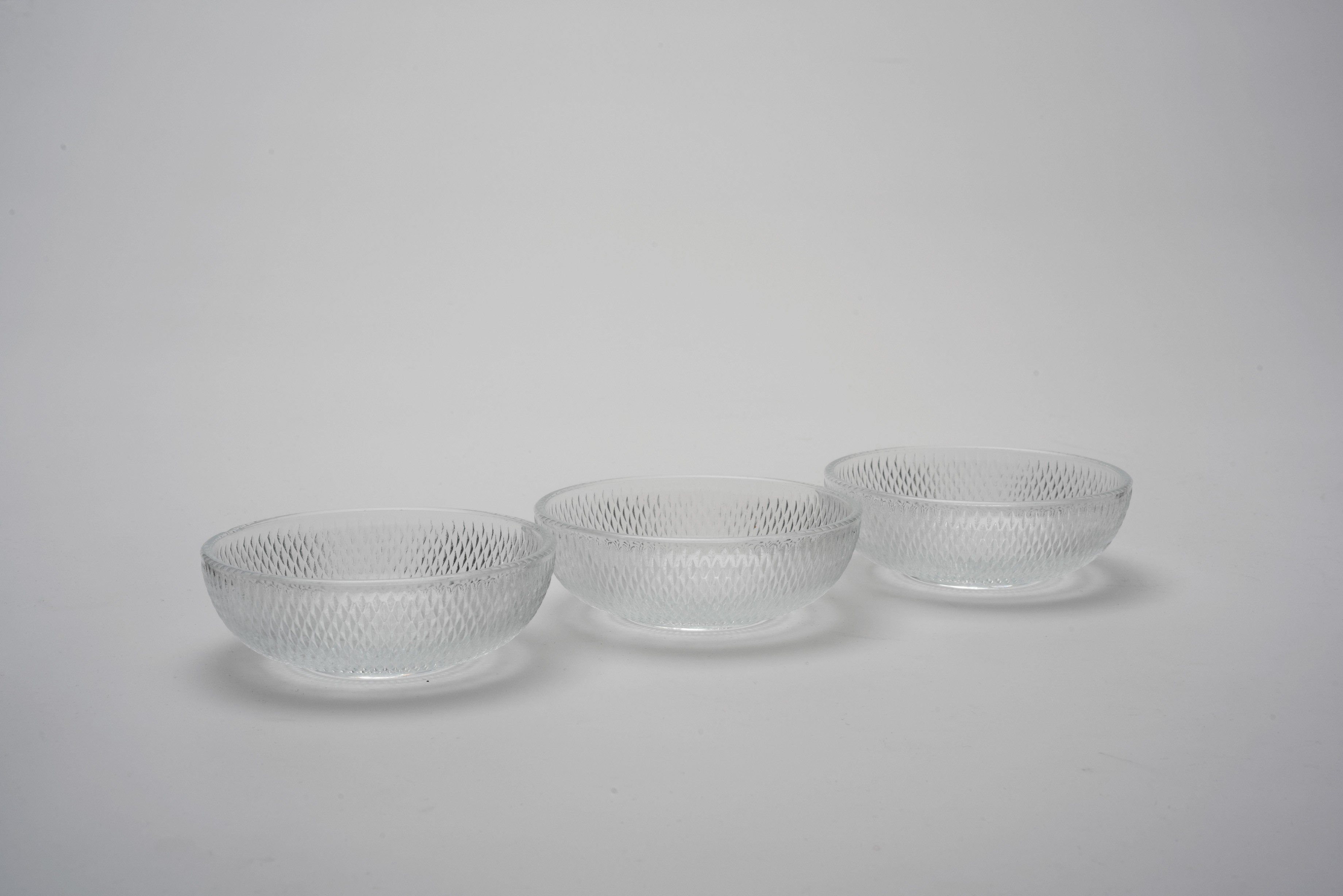Die Dessertschalen aus der Serie MANUELA des Schwepnitzer Glaswerks besitzten eine konvex aufsteigende Wandung. Der Boden sowie die Wandung werden flächendeckend mit einem plastischen Muster von an- und nebeneinander aufgereihten kleinen Rauten dekoriert. Nach unten werden die Rauten immer kleiner.
Auf dem Boden ist das Muster um einen zentralen glatten Kreis herum gestaltet und ähnelt somit einer Blßte oder Sonnenstrahlen, wobei wiederum die Rauten zur Mitte hin kleiner werden.
Die Serie MANUELA ist in der Sammlung auch mit einem Kuchenteller (14213/96-DDR) sowie einer Tortenplatte (7665/00-DDR) vertreten.
en

